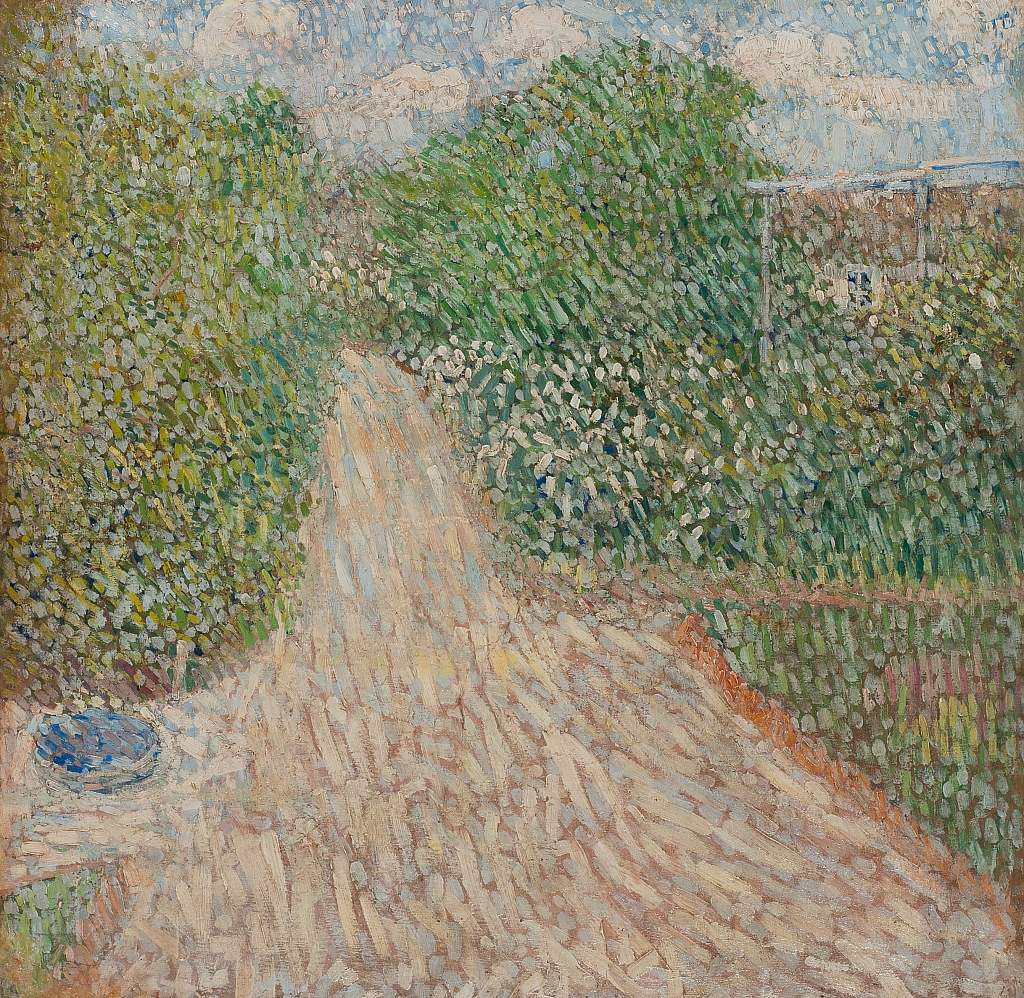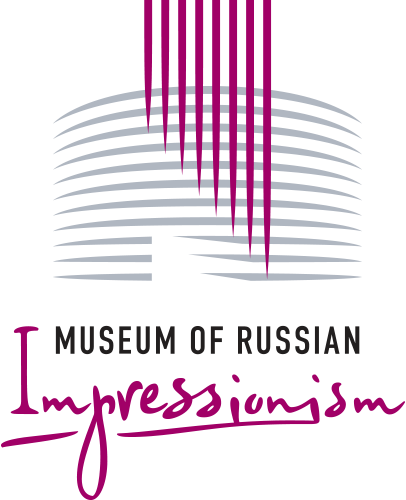
“Painting is life to me…” was the favorite phrase of Vladimir Baranov-Rossiné. Just look at the mosaic-like carpet of colours in this work, and its unusual composition. On the right is a house so smothered in lush greenery, it is almost invisible. The wide golden-ochre alley invites us into the depths of the garden. Cotton-like clouds float in the clear sky, looking almost like angels’ wings spread wide. The bright blue gleams in the sky and creates a feeling of breeziness, and the entire painting is bathed in warm gentle light. “Alley in the Garden” is one of Baranov-Rossiné’s earliest works, created in 1907, when he was only 19, still a student of Odessa Art School, and an aspiring artist interested in Impressionism. He was not yet Vladimir Baranov-Rossiné, but Shulim Wolf Labe Baranov, a boy from a modest Jewish family. In this early work, Baranov-Rossiné has already emerged as a deeply devoted and passionate artist. Starting his artistic journey with Impressionism, Baranov-Rossiné gradually moved towards Orphism and the so-called “polytechnic” sculpture which combined organic and inorganic materials. Naturally, his immediate surroundings were a great influence on the artist. After graduating from Odessa Art School, Baranov-Rossiné enrolled at the Academy of Arts in St. Petersburg. Later, in 1910, he moved to Paris, where he settled in the famous artist’s dwelling La Ruche, or the “Beehive”, sharing the building with outstanding artists like Marc Chagall and Amedeo Modigliani. In La Ruche Baranov-Rossiné experimented with different techniques and became deeply interested in music. Perhaps that musicality had already manifested itself in his “Alley in the Garden”.



